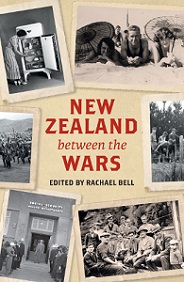
New Zealand Between the Wars
Creased cover.
If World War One was the crucible that forged an independent New Zealand identity, then the two decades following are surely the years in which the foundation for the new nation was laid. In shedding the last vestiges of colonial society in exchange for the trappings of a modern democratic nation, the 1920s and 1930s in New Zealand set a blueprint for state intervention and assistance that remained unchallenged for the next 50 years.
Along with the period's vast technological and infrastructural changes, most of which were state-funded and controlled, came new forms of communication, transport, entertainment and employment which led to changing expectations and reform in education, health, welfare, home ownership and commerce. From the depths of the Great Depression to the bright promise of the Welfare State, the interwar decades transformed New Zealand society, consolidating trends established before the war and initiating a slew of changes in attitude and practice that, as markers of modernity, set New Zealand firmly on its current course.
